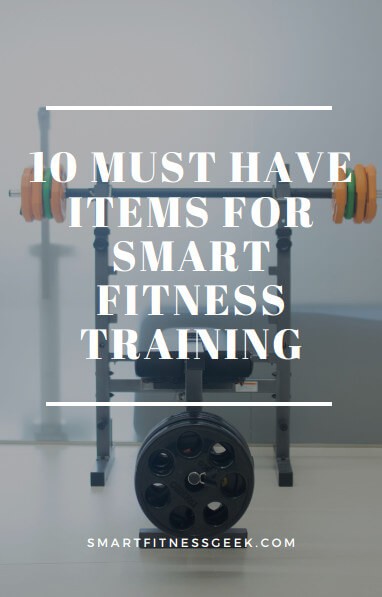Making a commitment to lose weight and develop a lean body can translate to overall improvements to your health. But before you can enjoy these benefits, you must first pick a form of cardiovascular exercise. When it comes to weight loss and indoor workouts, cardio machines come in all shapes and sizes. Treadmills and elliptical trainers are cardio classics. They represent 2 of the most popular aerobic exercise machines that have stood the test of time. Just walk into any gym, health club or workout facility and you are certain to find either of them.
Table of Contents
Elliptical vs Treadmill for Weight Loss
According to the Centers for Disease Control and Prevention (CDC), you should get at least 150 minutes of moderate cardio activity at least 3 days every week. Millions of people across the world log miles on ellipticals and treadmills on a daily basis to get a solid cardio workout done. There are several myths surrounding these cardio machines, but the truth is that if used correctly, they can both help you achieve the desired results.
If you want to burn fat and shed extra pounds, you need to take the cardio recommendations seriously. Strength training may make your muscles lean and boost your metabolism, but if you don’t perform any cardio exercises, you won’t burn many calories. The elliptical and treadmill are 2 of your best bets that can get your heart pumping and fat burning. If you’re looking to buy cardio equipment but are confused which one is your best fit, keep reading!
A treadmill lets you run or walk on a moving belt. You are allowed to control the incline as well as the speed according to your needs. With an elliptical, you’ll be required to place your feet on a platform and move in an elongated circle. Both machines are a great way to escape the weather while simulating a natural walking or running motion to burn calories and boost your cardio fitness. Although both machines display many similarities, there are also some differences. Treadmill and ellipticals target different muscle groups and provide different results.
Is the treadmill more effective for weight loss than the elliptical trainer? Which one should you choose for cardio workouts? These are some of the questions we get from our readers. The short answer is that it really depends! With regards to which one is better for weight loss, we’ll explore the pros and cons of each to help you make an informed decision.
Read on to discover our comparison and understand the differences and benefits of each.
Pros and Cons of an Elliptical Trainer
An elliptical trainer is a stationary exercise machine that lets you emulate the movement of walking, running or climbing stairs. Elliptical trainers have grown to become a popular choice for both home and gym use. Ignore people who claim that they can’t give you a good workout. Ellipticals combine arm and leg motions, with a flywheel providing adjustable tension. They are gentler on your joints and compared to the treadmill, engage more muscles. Energy expenditure when using an elliptical trainer depends on your fitness level, metabolic rate and body weight. To burn more calories, vary the resistance levels, pace and stride length.
Pros
Easy on joints – this low-impact machine puts less stress on your joints and ligaments. This makes it a safer option for people who find it hard to tolerate the jarring motion of running or walking. This is the major USP of this machine.
Safe – since your feet never leave the pedals, an elliptical reduces chances of a possible misstep that can result in loss of balance or a fall.
Reverse strides– elliptical trainers allow users to stride in reverse, which can activate various muscles groups. Going backward also works your hamstrings and calves more than a treadmill can.
Total body workout – by using the pedals as well as arm handles, you engage your lower body, core and upper body. An elliptical gives you the option to work backward and switch direction. Low impact exercise may not be that strenuous, but it still provides a great aerobic workout.
Affordable – ellipticals are generally cheaper. Compared to a treadmill, you can get a high-quality elliptical trainer at a fraction of the price of a good-quality treadmill. Also, ellipticals don’t require regular maintenance.
Cons
No impact workout – while this may be beneficial for the elderly and folks with joint problems, to keep your bones stronger, you do need some impact, something elliptical trainers lack.
Learning curve – if you haven’t used an elliptical trainer before, it may take a while to get used to it. At first, the movement may feel unnatural and awkward.
Feet numbness – since your feet will be on the pedals, you won’t have to pick them up. Over time, they can get numb as you work out.
Fewer settings – compared to treadmills, ellipticals offer fewer adjustment settings. You can only change the resistance, meaning you have to settle for a limited range of exercise.
Pros and Cons of a Treadmill
A treadmill is one of the most easy-to-use cardio machines that mainly works the lower body and cardiovascular system. It is the next big thing apart from running outdoors. A treadmill uses an electric motor to move the wide conveyor belt, which allows you to run or walk in place. This movement means you need to run or walk at the speed of the belt. You can pick from dozens of pre-set programs and integrate intervals into your workout routine. The surface is smooth, making it ideal for seniors and people with joint problems. The number of calories burned depends on your weight, workout duration, metabolic rate, speed, incline and intensity.
Pros
Imitates natural movements – a treadmill is designed to emulate the natural movement of jogging, sprinting or walking outside. When relating to running outdoors, running on a treadmill offers a more consistent workout.
Ease of use – unlike other overly complex exercise machines, a treadmill doesn’t have a steep learning curve. You already know how to walk and run. You just need to get used to the moving belt. Treadmills provide sport-specific training and track your progress.
Versatility – treadmills offer wide-ranging options in terms of incline, speed and multiple training programs. Lots of control means that you can use a treadmill for walking (slow or brisk), running or sprinting. Most treadmills are also equipped with sensors to monitor your heart rate. Since you can easily control incline and speed, treadmills are suitable for HIIT workouts.
Impact workout – you require substantial effort to propel your body weight. You can make a high-impact workout by sprinting, or a low impact workout by walking. This translates to a higher rate of burning calories.
Science-backed – treadmills have been around since 1800s, and are well-researched, developed and perfected than any other cardio machine.
Cons
Risk of injury – since you’ll be working out on a moving surface, there is always a risk of slipping and falling. Running on a treadmill can put more stress on your knee, hips, ankle joints, spine and bones, ultimately leading to knee injuries, shin splints and stress fractures. Also, the size of the belt can affect your posture.
It can get boring – walking or running on the same spot for long can get monotonous, especially if your treadmill has no entertainment options. Also, there’s no wind resistance or terrain change.
Expensive – when it comes to treadmills, you get what you pay for. High-quality treadmills with top features will cost over $1500, which can be too pricey for most consumers. Treadmills also require periodic maintenance, which comes at an extra cost.
Which Burns More Calories Elliptical or Treadmill?
You’re probably confused about which of the two is better from a weight loss perspective. Now that we have all the details, we can address this question. When it boils down to burning calories, the results are very close. This is because the calories burned depend on the intensity and the duration of your workout. A Medical College of Wisconsin study found that you burn an average of 705-866 calories for 1-hour jogging on a treadmill. By comparison, HealthStatus reports that you burn approximately 773 calories for 1 hour using an elliptical trainer. Based on these numbers, treadmills have a slight advantage when it comes to calorie burn.
When you have to pick up your foot up off the ground, you will use energy than when your foot stays stationary. For optimal fat loss, consider implementing HIIT when using a treadmill.
So to answer your question, at equal heart rate, a treadmill burns more calories but requires a lot more exertion to do this.
Conclusion
So there you have it – a detailed review of 2 of the most popular cardio machines. A treadmill and elliptical trainer both help burn calories, improve aerobic capacity and provide an effective cardiovascular workout. But as you can see, each machine has its own set of unique benefits and drawbacks. Treadmills are more versatile and offer more calorie burn as you’re supporting your own body weight.







